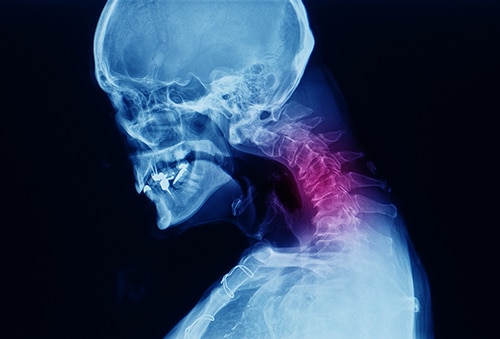Would you like to continue or select additional body parts?

- Home
- Treatments
- Surgical
Anterior Cervical Discectomy & Fusion
An anterior cervical discectomy and fusion is a type of surgery that involves removing a damaged disc to relieve spinal cord or nerve root pressure and alleviating corresponding pain, weakness, numbness, or tingling. The surgery has two parts:
- Anterior cervical discectomy: Your surgeon will remove the affected disc by approaching the cervical spine through the anterior, or front.
- Fusion: A fusion is done in order to re-stabilize the cervical segment of the spine from which the disc was removed.
During the procedure, a small incision is made over the treatment area. The damaged disc is removed to reduce pressure on the spinal cord or nerve root. Then, an implant is inserted to fill the space where the disc was removed. This implant acts as a support for the vertebrae while bone grows during the bone healing and fusion process. This segment of the spine will stabilize once the fusion occurs. Additional hardware like screws, rods, or plates are used as a stabilization device and to hold everything in place as the bones heal.
This procedure is done using an anterior approach, which means the surgery is done through the front of the neck as opposed through the back of the neck. This approach has several advantages:
- Direct access to the disc: The anterior approach allows for direct visualization of the cervical discs. In fact, the anterior approach can provide access to almost the entire cervical spine, from the C2 segment at the top of the neck down to the cervicothoracic junction, called the C7-T1 level, which is where the cervical spine joins the thoracic spine.
- Less postoperative pain: Because the anterior approach provides access to the spine through a relatively uncomplicated pathway and involves a limited amount of muscle division and dissection, patients tend to experience less incisional pain than a posterior operation.